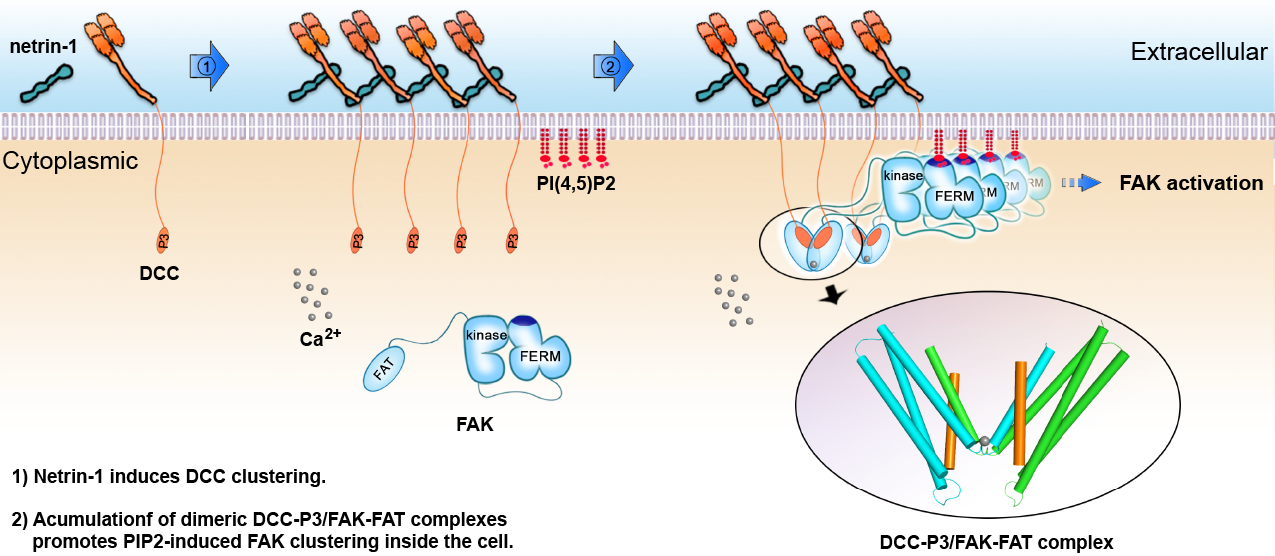Home >Research Focus

The environment in which higher organisms live is constantly changing. Cells respond to these changes by recognizing various signals in their surroundings or from contacting other cells, converting these signals into functional molecular changes within the cell. This process can affect the growth rate of the cell or even induce cell death, enabling the organism to adapt appropriately to environmental changes. The surface of higher organism cells is equipped with numerous transmembrane receptor proteins that can specifically recognize different extracellular signals. When these signaling molecules bind to their corresponding receptors on the cell membrane surface, they trigger conformational changes that initiate intracellular signaling pathways. If extracellular signal sensing becomes disordered, normal biological activities can be severely disrupted. Our research group has conducted a series of studies on the molecular mechanisms by which cell membrane surface receptors specifically recognize ligands.
Elucidation of the Molecular Mechanism by which the Axon Guidance Receptor DCC Mediates Axon Guidance (Cell Discovery, 2018)
The formation of neural networks during development is closely related to brain function. Axon guidance is critical for ensuring that axons grow along precise pathways, which is essential for the formation of correct neural networks. Alterations in axon guidance play a significant role in the development of neurodegenerative diseases. The extracellular domain of the axonal receptor DCC on the cell membrane can sense the axon guidance molecule Netrin-1 in the environment, leading to the interaction between the intracellular domain of DCC and the kinase FAK, ultimately resulting in the attraction of axons toward regions with high concentrations of Netrin-1. The study elucidated the structure of the DCC-FAK complex and, through biochemical and cellular experiments, revealed the molecular mechanism of the DCC-FAK interaction. The study also proposed a specific model by which the interaction between DCC and FAK promotes the activation of FAK. This research enhances the understanding of the molecular mechanisms underlying axon guidance and provides a theoretical foundation for developing therapeutic strategies for neurological diseases.

Address: No. 1, Shizishan Street, Hongshan District, Wuhan City, Hubei Province
Post Code: 430070
Phone: 027-87282027
Fax: 027-87384670
CopyRight © Huazhong Agricultural University All rights reserved